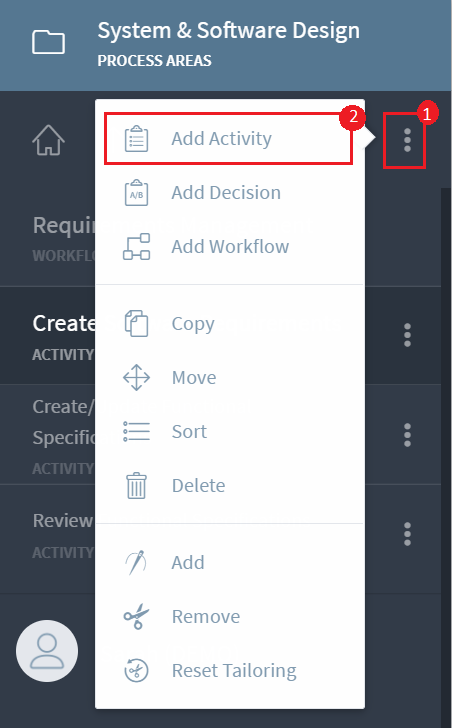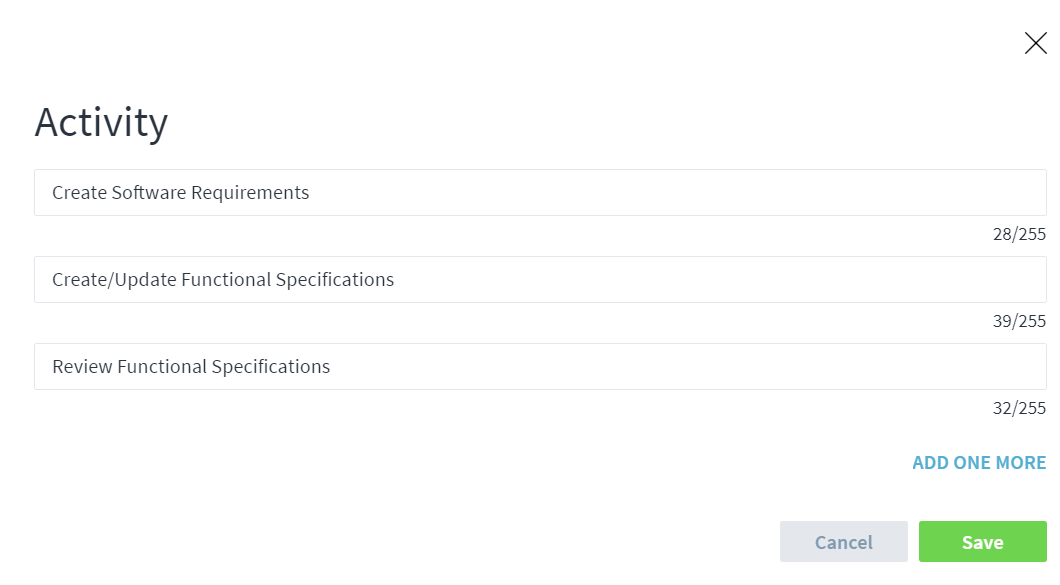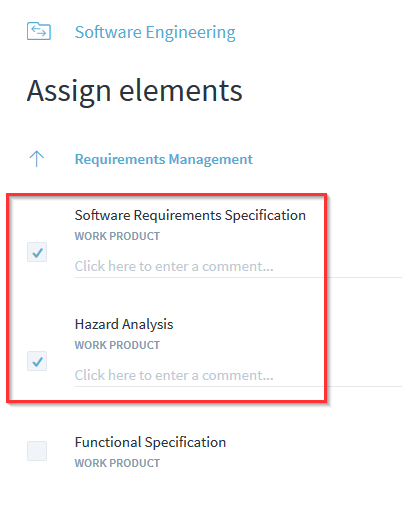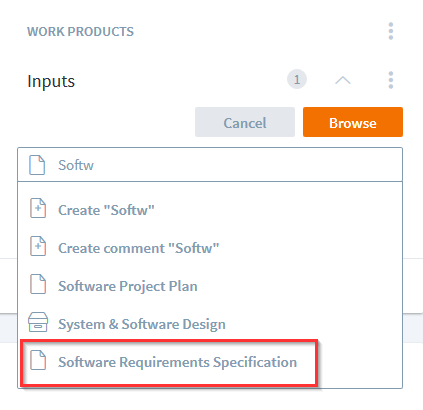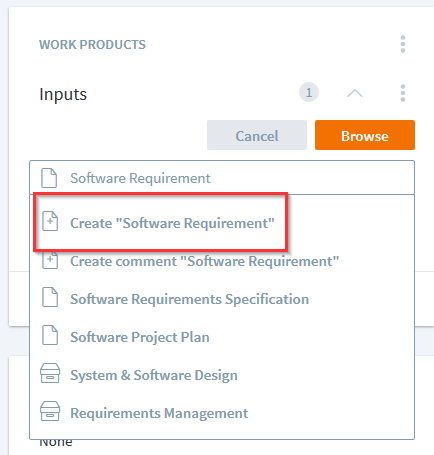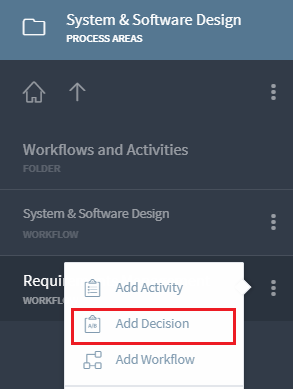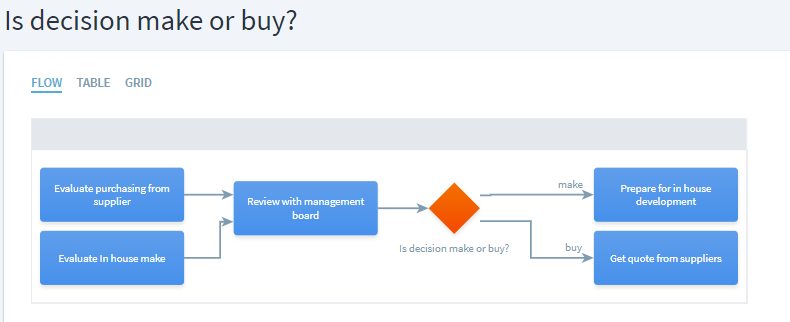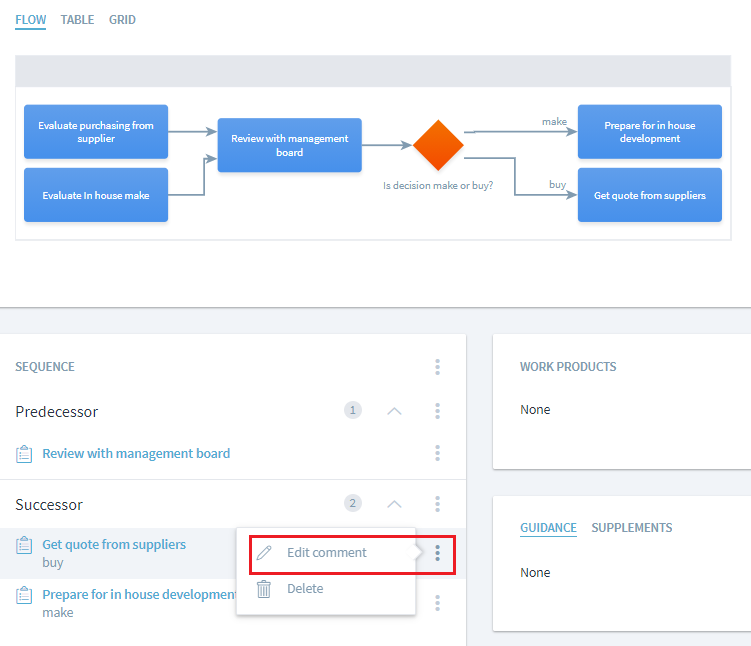Model a Process
Modeling a process enables a clear and consistent definition of processes. It also helps to eliminate redundancies and identify inefficiencies. Since the processes are stored and updated under one umbrella, Stages provides a central hub for the entire organization to use and review the modeled processes.
Below you can find the description of how to model a process within Stages. Before you begin modeling, understanding the process content and modeling guidelines is crucial to building good processes.
In general, you should make sure to be in the Modeling Perspective when doing modeling work.
Model a Workflow
Select the workspace where you want to model your process and click or tap on Process. You will see the following element types under Process: Workflows and Activities, Work Products, Roles, Phases and Milestones and Guidance. To begin modeling, click or tap on Workflow and Activities.
To add a new workflow, you can either click on ‘Add Workflow’ or the + symbol.
Note: Make sure you have selected the ‘Modeling’ perspective, to see all modeling options available for the current element.
Model an Activity
To create the first activity within a workflow, click or tap on the three dots next to your workflow name or use the + option on the flow chart.
Once you are in the workflow, you can create an additional activity by clicking or tapping on three dots next to the workflow. This creates an activity that is not associated as a predecessor or successor to another activity.
As a modeler, your preference might be to create a set of activities that are sequenced in the workflow as predecessor and successor. This can be achieved faster by using the + option (which turns into x when clicked upon)
For our example, we are creating three activities within the ‘Requirements Management’ workflow using the + option. All three activities are created at one go and are already linked to each other (as predecessor/successor) in the order they were created.
Tip: Instead of clicking on ADD ONE MORE, you can hit on the ‘Tab’ key on your keyboard to do the same.
Add Predecessor or Successor Activity
To create a predecessor or successor for a specific activity, navigate to this activity by clicking on it in the visualization. The selected activity is highlighted in orange.
For the following steps, make sure you are in the Modeling Perspective.
Click on Add Predecessor or Successor in the Sequence widget to associate an activity.
In our example, we created an additional activity called 'Perform Hazard Analysis'. We now associate this activity as a successor by using the described option.
Associate Process Elements to an Activity
In addition to the Sequence widget, there are also widgets for associating work products, roles, phases & milestones, guidance to an activity.
To associate an element like a work product, click or tap on the three dots in the respective widget to see the available options for that element like adding inputs and outputs for a work product or add responsible, accountable, supporting, informed, or consulted for a role.
Once you select what type of information you want to add, there are three alternatives available to add it:
- Use 'Browse' to associate several elements or elements from the same or different workspace
- Start typing to associate a single, already existing element from the same workspace
- Add an association and a new element at the same time in the same workspace
Use 'Browse' to associate several elements or elements from the same or different workspace
Click on the option you want to use and select the Browse button. Browse to the elements you want to associate and select them by activating the respective checkboxes. It is possible to select elements from different hierarchy levels.
If the element you want to associate is located in a different workspace, enter the workspace navigation by clicking on the workspace name at the top of the pop-up dialogue and browsing to the needed workspace.
For each element, you can also add a comment to the association.
Start typing to associate a single, already existing element from the same workspace
If you want to associate a single, already existing element, start typing in parts of the name and Stages will give you suggestions for available elements in the workspace.
Add an association and a new element at the same time in the same workspace
If the element you want to associate does not exist yet, you can create and associate it at the same time. To do that, type in the desired name for the element and click or tap on Create “Desired Name of the Element”.
Editing/Deleting Elements
Once you have added the process element of your choice, you can edit comments or delete the selected option (e.g. output called functional specification in our example) by clicking on the three dots.
Description and Attributes
Use the pencil icon to make changes to the description or to update the flow start/end point (attribute) of your activity.
Model a Decision
In Stages, the steps to create or update a decision are the same as ones defined in the section for an activity. The recommended practice is to use decision sparingly only when required. Too many decision boxes with associations jumping back and forth can distract the users and make the process hard to decipher.
The decision is in a diamond shape versus the rectangle box for an activity in the visualization diagrams.
Specifying the Alternatives in Decision
A decision would entail two or more different paths depending on the answer to the decision in question. In Stages, the path that a specific decision leads to can be specified using comment. The ability to add a comment is also available for an activity. However, comments for successor activities of a decision make it clear to the end-user which decision led to that activity.
Typical decision alternatives are 'Yes' and 'No'. In the below example, the alternatives modeled are 'make' and 'buy'. This is done by adding a successor to the decision and tapping or clicking on three dots on the successor activity in the sequence and editing a comment.
Note: Once you type your comment, hit enter and your comment will be saved.




